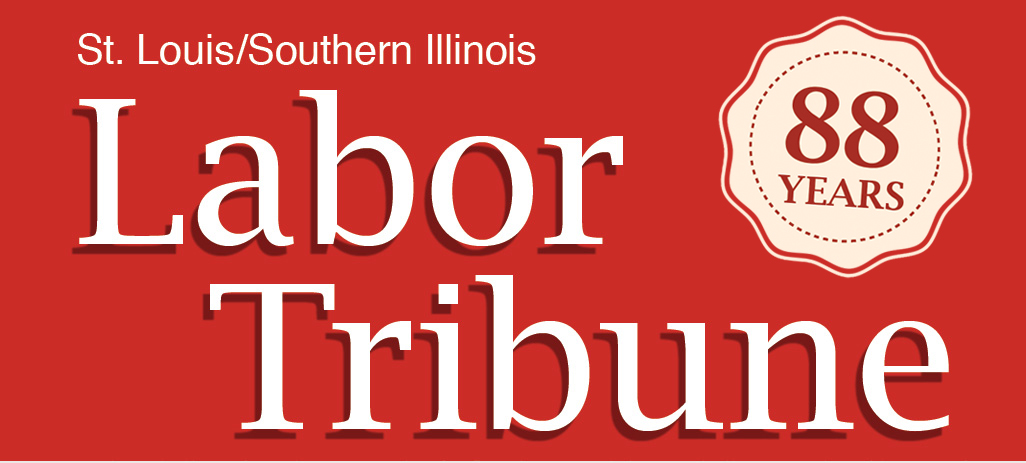OPINION: Those who hate public sector unions also hate democracy. It’s not a coincidence.
 By HAMILTON NOLAN
By HAMILTON NOLAN
There is perhaps no odder sight in American politics than Republicans who owe their careers to the celebration of cronyism suddenly becoming good government defenders who criticize public sector unions as protection rackets. In fact, the longstanding Republican practice of treating public unions as Public Enemies has a simple explanation: In red states, those unions are often the strongest interest groups backing the Democratic Party, and sometimes the only interest groups capable of pushing for policies that benefit the working class.
When Republican governors take control of a state, they tend to view public unions as the last stubborn opponents standing in the way of transforming that state into a Koch Brothers fever dream.
GOP Govs. Scott Walker in Wisconsin, Chris Christie in New Jersey, and others understood that breaking the unions was key to their goal of sapping Democratic power in closely divided states. They typically divide and conquer, exempting the police and fire fighter unions from their crackdowns while accusing the teachers and other public employee unions of any outrage they can think of.
This process is playing out today in Florida, where Gov. Ron DeSantis passed a raft of burdensome requirements that have already succeeded in causing more than 50,000 public employees there to lose their unions. The end goal, always, is to clear away a serious obstacle to making their state less democratic, more corporate-friendly and more right wing.
The destruction that is done to all of the teachers and municipal workers and their families — and to the functioning of the public systems that those workers take pride in — is considered mere collateral damage in the Holy War of Lower Income Tax for Boat Owners.
BUILDING UP PUBLIC SECTOR UNIONS
For this reason, the task of building up public sector unions, especially in red states, has a political importance that equals its importance to the workers themselves. Red state teachers unions are vital for teachers to earn a decent living, yes, but they are also vital as a firewall against the erosion of the public school system, and against the broader right-wing project of gerrymandering and voter suppression and rewriting of rules to marginalize Democratic power permanently. (The Supreme Court gave that project a big assist with the 2018 Janus v. AFSCME ruling, which rendered the entire public sector “right to work.”) People who signed up to be bus drivers or school janitors or teachers may not have known that they were also going to be on the hook for saving democracy in their states, but, for better or worse, that’s where we are.
So any significant new organizing in the public sector in red or purple states is reason to sit up and take notice.
Last month brought a huge one: The successful unionization of more than 27,0000 public school employees in Fairfax County, VA. The teachers’ “yes” vote for the union was 97 percent. It was, depending on how you define your terms, one of the biggest public sector union wins in the nation in the past quarter century. And, though every state is unique, there are some deep lessons for the entire Labor Movement in what just happened in Virginia.
THE CHALLENGES
In 1977, the Supreme Court of Virginia outlawed public sector bargaining in the state completely, gutting the power of all public sector unions. That persisted until 2020, when a law was signed under a Democratic trifecta in the statehouse allowing public sector bargaining in any municipality that passed a resolution calling for it. The Fairfax County School Board passed its resolution last year, and the door was open.
The first problem they faced was that there were two separate unions representing the county’s school workers. The two unions were not particularly fond of one another. But Leslie Houston, president of the NEA-affiliated Fairfax Education Association, and David Walrod, president of the AFT-affiliated Fairfax County Federation of Teachers, understood that pursuing collective bargaining separately would make their task involve twice as much work. They forged a personal working relationship and agreed to unite their organizing under one banner.
“We realized that we could have fought it out between ourselves, and we could have competed against each other,” Walrod tells In These Times. “And it would have taken years away, and it would have left workers in a worse condition waiting for us to figure ourselves out.”
The ability of competing unions to set aside their egos and work together is something that many union presidents could learn from.
Next, the two unions divided the county’s 242 school work sites in half, and began organizing in earnest. Houston said her team, bolstered by dozens of organizers from around the country, worked seven days a week for eight weeks straight, speaking to uncertain workers about what collective bargaining would mean for them.
By May 1, they had collected enough signed union cards to file for their election. And now, less than two months later, they have their union, and can turn their attention to contract negotiations.
The union covers two separate bargaining units: 16,000 teachers, and about 11,000 operational workers, including bus drivers, maintenance workers and others. Houston — whose uncle is a custodian, and whose aunt is a food service worker — says a key to winning the support of such a disparate group was to guarantee the operational workers that the teachers would not move ahead without them. That solidarity paid off.
“If we don’t have bus drivers, kids can’t get to school. If we don’t have custodians, teachers have to clean their classes. If we don’t have food service workers, then nobody is going to feed the kids. Do you see where I’m coming from?” Houston asks. “If these people start to rise up, and decide that we’re not doing it any more, then what’s going to happen? Do they really, really want some of this?”
AFTER THE ELECTION
With the election behind them, the leaders of the newly-formed Fairfax Education Unions have begun to turn their eyes to the rest of the state of Virginia, where hundreds of thousands of other public employees await their own organizing drives.
Walrod hopes to see a “ripple effect” from Fairfax spreading out to educators across the state. He is quick to point out that this doesn’t happen overnight — getting the collective bargaining ban overturned in the first place took more than a decade of hard political work, even with a supportive legislature and governor.
But for the moment, the conditions are in place for a huge increase in public sector unionization in the state. (According to an internal AFT spreadsheet, the union has added just over 52,000 newly organized workers nationally since August 2022, with the Fairfax County workers making up more than half of that total.)
“I know every teacher wants to just stay in their classroom, and every teacher wants to make sure that they’re doing the best job for their kids that they can,” says Walrod. “But part of the reality is that anything you do has a basis in politics.” In order for teachers to be left alone to do their best in the classroom, in other words, their unions must have enough political power to protect them from the politicians.
LESSONS FOR OTHER STATES
The nascent success of public sector organizing in Virginia has different lessons for different states.
In the hard red Deep South, where prospects of a friendly state legislature are dim, Virginia can at least serve as a showcase for how a state can change when teachers unions get significantly bigger.
In more evenly divided states — like Florida, for example — Virginia offers a two-step path to reviving public sector Labor power: as soon as Democrats get a toehold in the statehouse, make it a priority to roll back right-wing restrictions on public unions, and then let organizing flourish enough to begin tilting the statewide balance of political power back towards workers.
Republicans can scaremonger all they want, but this organizing will come with three guaranteed results: Better wages for state employees, better public services for state residents, and, in the long run, a slightly lower chance that a national presidential election could be thrown by the corrupt machinations of a determined one-party state legislature.
THE BENEFITS OF ORGANIZING
I often write harangues about the Labor Movement’s need to vastly increase new organizing in the private sector, where union density stands at an abysmal six percent. But we should not forget that America’s biggest public sector unions — particularly NEA, AFT and AFSCME — have enormous resources and are often the best positioned to pull off large-scale new organizing drives, as Fairfax County shows. Raising union density will have a healing effect on America’s sickly democracy.
In the private sector, that effect is somewhat roundabout, flowing from the process of working people participating in democratic unions and seeing their material lives improved as a result.
In the public sector, it is more direct: Public employees who are treated better will do their jobs better, the government will function better and piss off voters less, and stronger public unions can use their lobbying muscles to stand up to apocalyptic right wing visions of a fully privatized nation with no safety net.
What’s not to like? Organize everywhere, and worry about everything falling apart just a little bit less.
(Hamilton Nolan is a Labor writer for In These Times. He has spent the past decade writing about Labor and politics for Gawker, Splinter, The Guardian, and elsewhere. More of his work is on Substack. Reprinted from In These Times.)



Leave a Reply